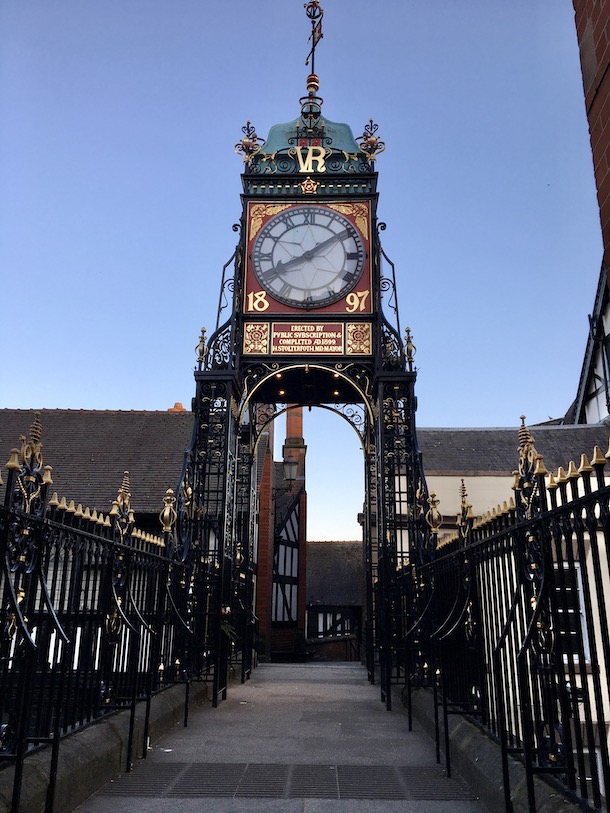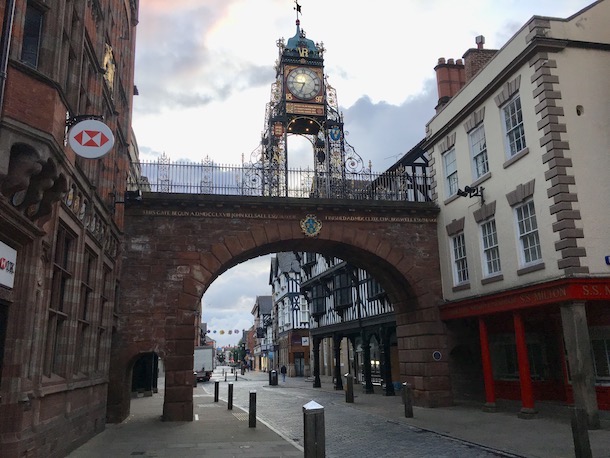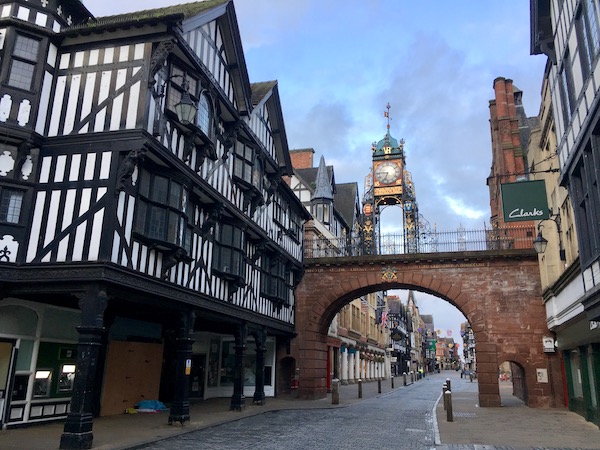Eastgate Clock
The Eastgate Clock is a turret clock built above the Eastgate of the ancient walls of Chester. Although the original gate was Roman, the present gate was built in Georgian times to allow coaches through. However, the clock wasn't added until the Victorian era to celebrate Queen Victoria's diamond jubilee. The clock is considered a landmark of Chester, and is the second most photographed timepiece in the United Kingdom after Big Ben. Eastgate with its clock is a Grade I listed building.

A commemorative structure for the Eastgate was first suggested in 1872, as a memorial of a visit by the Prince of Wales (future king Edward VII of the United Kingdom) to open the city's town hall. However, a lack of funding by Chester City Council led to the idea being abandoned for 25 years, until the idea was revived as part of the Diamond Jubilee celebrations. The Duke of Westminster solicited designs from the eminent architect John Douglas, who had designed much of Chester's Tudorbethan architecture.
The proposal was not initially popular; initially, the public preferred either a statue of Queen Victoria for the town square or a large donation to the Queen Victoria's Jubilee Institute for Nurses. However, eventually enough support was canvassed for the committee set up to choose a memorial to accept the clock.

The first design for the clock was for a stone tower on top of the gate. However, the clock would have put several ancient lights into shadow, violating the tenants' right to light. As result, the wrought-iron design was chosen. The final design for the clock was chosen in March 1898, almost 2 years after Queen Victoria's diamond jubilee. The iron was produced at the nearby Coalbrookdale foundaries (now the Ironbridge Gorge Museum), part of Ironbridge, and forged by a local firm, based in the Chester suburb of Handbridge. The clock mechanism was built by JB Joyce of Whitchurch, the oldest tower clock company in the world, and donated by Edward Evans-Lloyd, a freeman of the city.
The clock was formally unveiled on 27 May 1899, the 80th birthday of Queen Victoria. The clock was initially controversial; some thought that the bright red and gold finish and elaborate iron frame made it too garish, and unsuited to its surroundings.

The clock consists of a cuboid housing with clock faces on every side. The clock faces use roman numerals and are made of frosted glass, allowing an internal lamp to illuminate the hands at night. The mechanism used an innovative system to house the weights which powered the clock within the small frame, leading to the popular opinion that a smaller, but less accurate, spring mechanism had been employed instead. The pendulum weighed one Imperial hundredweight (112 lb, 50 kg), in order to protect the pendulum from disturbances due to high winds. The roof of the clock is a green copper ogee roof.
The clock required weekly winding until 1992, when the original wind-up mechanism was replaced by an electric one, to reduce maintenance costs. JB Joyce of Whitchurch are in charge of maintaining the clock, and until the conversion to electricity, sent somebody to wind the clock every week.


